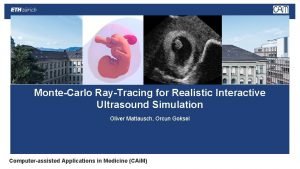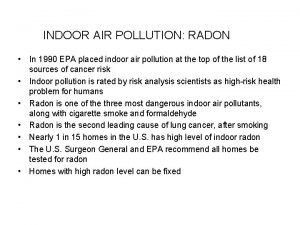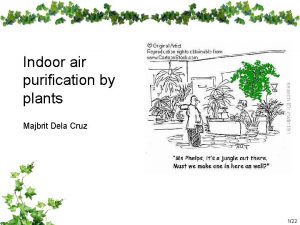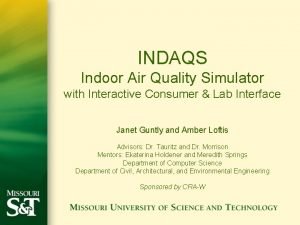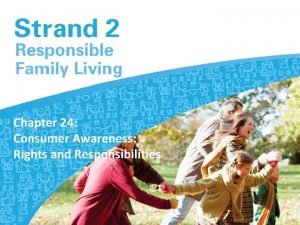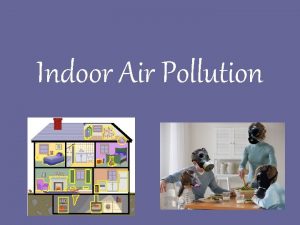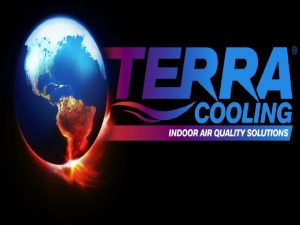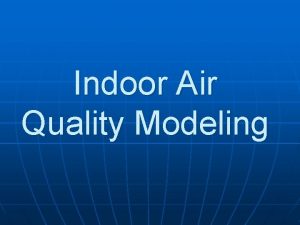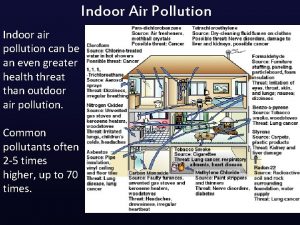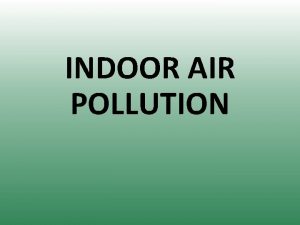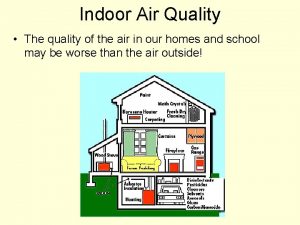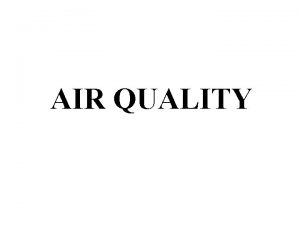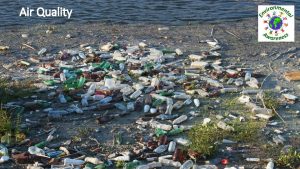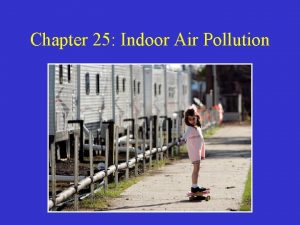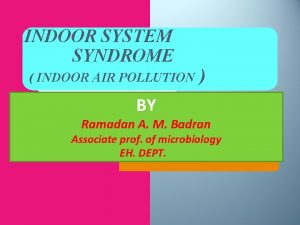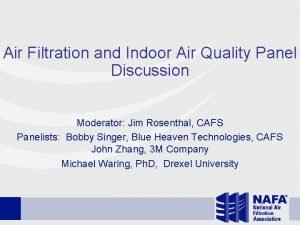INDAQS Indoor Air Quality Simulator with Interactive Consumer


















- Slides: 18

INDAQS Indoor Air Quality Simulator with Interactive Consumer & Lab Interface Janet Guntly and Amber Loftis Advisors: Dr. Tauritz and Dr. Morrison Mentors: Ekaterina Holdener and Meredith Springs Department of Computer Science Department of Civil, Architectural, and Environmental Engineering Sponsored by CRA-W

Motivation • Among top five environmental health risks 1 • Americans spend 90% of time indoors 2 • Exposure to pollutants can result in allergies, irritations, respiratory illnesses, and cancer 4 • Costs US roughly $160 billion a year 3

Goals • Raise consumer awareness • Improve consumer health • Provide easy computational research tool • Undergraduate research ◦ Interdisciplinary collaboration ◦ Extracurricular learning ◦ Exposed to graduate style learning

Questions • Consumer ◦ What happens to the air quality in my home when I use cleaning supplies? ◦ Is my air purifier improving my indoor air quality? • Researchers ◦ What is the deposition velocity and is a mistake possible? ◦ What is the concentration of ozone in the chamber for α-pinene experiments?

Existing Simulations • CONTAM ◦ Overly complex for consumers ◦ http: //www. bfrl. nist. gov/IAQanalysis/ • University of Texas at Austin ◦ Insufficient for our types of questions ◦ No data interpretation ◦ http: //www. ce. utexas. edu/bmeb/index. cfm

Equations • Steady state rate model • Nazaroff (1986)5 and Carslaw (2007)6

Developing Model Input • Determined acceptable ranges and estimated default values • Aggregation of values identified during extensive literature search

Example: Air Exchange Rate • Murray and Burnmaster (1995)7 ◦ Range: 0. 05 - 6. 5 ◦ Mean for US: 0. 5 ◦ Mostly for windows closed • Howard-Reed (2002)8 ◦ Range: 0. 10 – 0. 82 windows closed 0. 44 - 1. 66 windows open

Simulation Engine • Common backend for consumer and lab interfaces • Solves the set of equations for userselected unknowns • Employs the GNU Scientific Library (GSL) for Multidimensional Root. Finding 9

Consumer Interface

Lab Interface

Summary • Indoor air quality is a critical, but underresearched health concern • Determined acceptable variable ranges and values for common indoor air equations • Common simulation engine powers both lab and consumer interfaces

Future Work • Validate solutions and acceptable ranges • Dynamic temporal-spatial equations • Lab tests for a specific emission or source • Add more features to the interfaces ◦ More scenarios ◦ Add animation ◦ Advanced integrated interface

Impacts • Template simulation engine for other uses (i. e. , medical) • Empower consumers to make informed decisions • Increase productivity of researchers

Primary Sponsor Computing Research Association Committee on the Status of Women in Computing Research (CRA-W) Program: Multidisciplinary Research Opportunities for Women (MRO-W)

Missouri S&T Sponsors • Department of Computer Science • Department of Chemical Engineering • Department of Civil, Architectural and Environmental Engineering • Women’s Leadership Institute • Academic Affairs • Intelligent Systems Center

References 1 Guide to Air Cleaners in the Home. United States Environmental Protection Agency. Office of Air and Radiation, Oct. 2007. 2 Spengler, John and Samet, Jonathan. Indoor Air Quality Handbook. New York: Mc. Graw-Hill, 2000. 3 Fisk, William. E-Vision 2000 Conference, 11 -13 Oct. 200, Washington DC. Health and Productivity Gains from Better Indoor Environments and Their. Berkeley: Lawrence Berkeley National Laboratory, 2000. 4 Godish, Thad. Sick Buildings: Definition, Diagnosis and mitigation. Boca Raton: Lewis Publishers Inc. , 1995. 5 Nazaroff, William W. , and Glen R. Cass. "Mathematical Modelling of Chemically Reactive Pollutants in Indoor Air. " Environmental Science & Technology 20 (1986): 924 -34. 6 Carslaw, Nicola. "A new detailed chemical model for indoor air pollution. " Atmospheric Environment 41 (2007): 1164 -179. 7 Murray, Donald M. , and David E. Burnmaster. "Residential Air Exchange Rates in the United States: Empirical and Estimated Parametric Distributions by Season and Climatic Region. " Risk Analysis 15 (1995): 459 -65. 8 Howard-Reed, Cynthia, Lance A. Wallace, and Wayne R. Ott. "The Effect of OPening Windows on Air Change Rates in Two Homes. " Journal of the Air & Waste Management Association 52 (2002): 147 -59. 9 <http: //www. gnu. org/software/gsl/manual/html_node/ Multidimensional-Root_002 d. Finding. html>.

Questions?
 Primary secondary tertiary food chain
Primary secondary tertiary food chain Montecarlo
Montecarlo Indoor air pollution examples
Indoor air pollution examples Radon indoor air pollution
Radon indoor air pollution Prevention of indoor air pollution
Prevention of indoor air pollution Indoor air pollutants
Indoor air pollutants Hubungan air dengan tanah
Hubungan air dengan tanah Air pollution simulator
Air pollution simulator Primary consumer
Primary consumer Cengage
Cengage Consumer research in consumer behaviour
Consumer research in consumer behaviour Buyer behaviour
Buyer behaviour Business buyer behavior refers to the
Business buyer behavior refers to the Responsibilities of a consumer
Responsibilities of a consumer Quality control and quality assurance
Quality control and quality assurance Pmp quality vs grade
Pmp quality vs grade Pmbok quality assurance vs quality control
Pmbok quality assurance vs quality control Ana quality assurance model
Ana quality assurance model Quality improvement vs quality assurance
Quality improvement vs quality assurance

